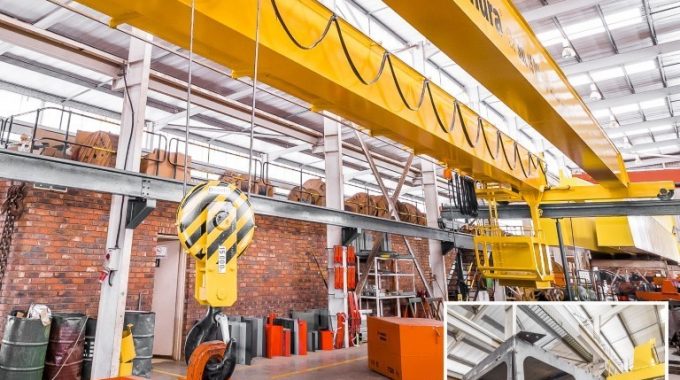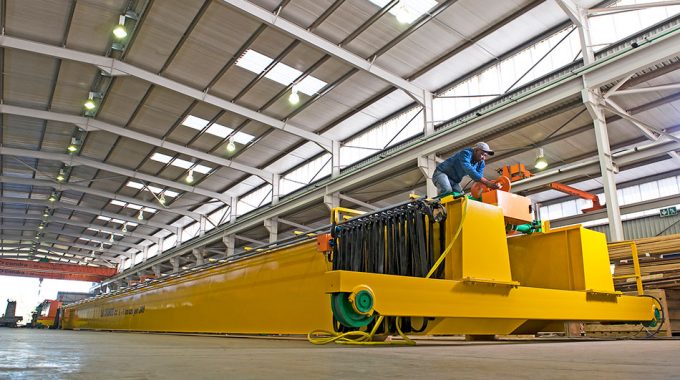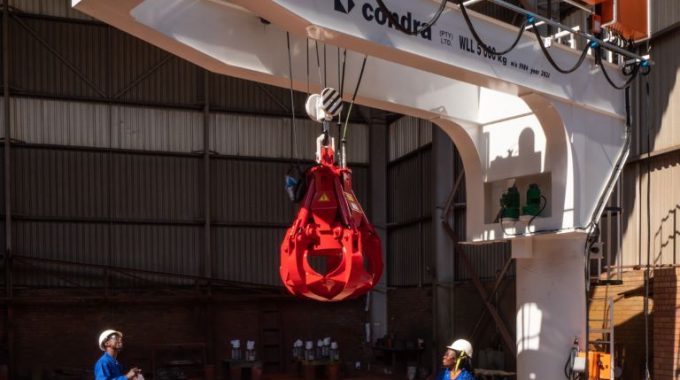The Official Mining in Africa Country Investment Guide – Interview with Marc Kleiner and Kyle Kleiner, Condra Cranes

Interview with Marc Kleiner (MK), Managing Director and Kyle Kleiner (KK), Sales Director, Condra Cranes
Selections of the approved transcript may be included in the final editorial
What milestones has Condra achieved since 2020?
MK:Condra Cranes has a vast network of end-users and consultants that have been involved in many different projects over the past 18 months. We are currently working on a specialized double-boom jib for an underground application and hope to make 12 additional units with the same design. We are also working on a coil-handling crane project that requires various technologies in monitoring, data logging and information capture, which will better enable the client to maintain his equipment by identifying the precise location of any fault in the crane system. These contracts came to us due to the durability of our products and our ability to finish designs and projects under tight deadlines. Another noteworthy contract came from Botswana, where we delivered a 60-tonner and 20-tonner for gold production.
KK: The reason our equipment has been so successful in the current sales environment, which is difficult, is partly due to the recent boom in resource prices. The mining industry is trying to move mineral commodities as fast as possible while the prices are strong. This is why lead times make such a huge difference. If you can deliver quickly enough, you are more likely to get the contract. Condra Cranes supplies the central and southern African market from South Africa and can thus get to the client and his mining site quicker than other companies who manufacture abroad, especially now with the onset of the pandemic. Shipping costs are also increasing dramatically, and thus we have an advantage in supplying the African market from our factories in South Africa. While we do import some components such as motors and ropes from Germany, we hold stock of these in South Africa where all crane design, hoist design and all manufacture take place. We also have a production facility in Bulgaria from where we import certain prefabricated steel components, as steel is currently very expensive in South Africa, having approximately doubled in price over the past year.
The mining industry is currently the market of greatest significance to Condra. Although we are not seeing many new mining projects coming on stream, there is a considerable amount of activity in crane upgrades, refurbishments, maintenance and after-sales service at the mines while the mining industry takes advantage of the commodity super-cycle.
With regards to technological advancements, to what extent are sensors becoming crucial in overhead cranes?
MK: With sensor-driven cranes, there is a requirement for service-driven maintenance of the installed technology on the part of the supplier, and with mines being very far apart this becomes challenging. We do offer a fully automated option on all our cranes, but we also issue a cautionary where the mines are concerned, as it is sometimes difficult to respond quickly to service requirements once the cranes are in the field. The job itself is not the challenge, but the travelling time to remote locations is. Thus, it is not always the best decision to have highly automated and sensitive machines that rely heavily on maintenance in the African market.
KK: We are working on virtual maintenance and service videos to address this challenge, but this does not entirely solve the problem as you still need that element of experience when it comes to maintenance and servicing, especially when they are technology-rich. The cranes for the coil-handling project are smart and do have encoders and sensors, but these machines will be installed in a major city and can be accessed very quickly.
With Condra having been in the crane and hoist industry for 56 years, how would you describe the current health of the South African mining industry?
KK: I believe that, globally, mining companies might have been drained by government regulation of some of their passion for building, creating, and contributing to society. This regulation is a distraction from what they do best. There are now statutory regulations on sustainability, the environment, social contribution and corporate governance criteria. The mining companies have complied with all of it – they have the documentation and they are doing what they have been told to, but the passion has been lost, and this is clear. We need to again find the desire to contribute to society. Companies need to be allowed to uplift communities by doing what they do best, and with the minimum possible bureaucratic interference and paperwork.
MK: The South African mining market has been dormant in terms of greenfield projects for the last several years. New mines are needed to unlock the potential of South Africa’s secondary and tertiary sectors.
What is Condra Cranes’ strategy to facilitate growth and consolidate the company’s market share?
MK: The strategy is to continue developing our export market, which has been difficult to do due to the pandemic. The Southern African market for cranes is relatively small because it is mining focused and there is currently not enough new investment in this sector. We want to enter fresh markets both in Africa and overseas to facilitate company growth.


